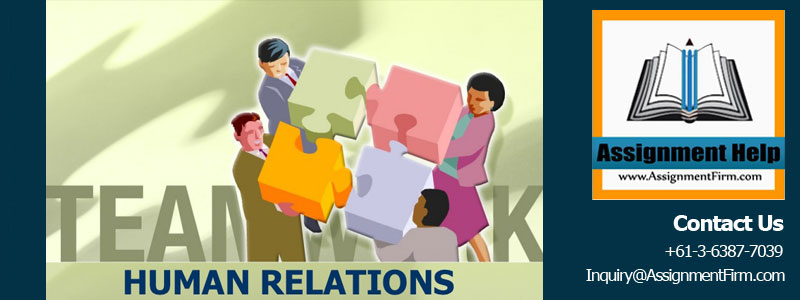Introduction
The transition described in Human Relations Essay is an ongoing process involved at every stage of human life. The Human Relations Essay would be looking into the Adulthood transition of human determining a predictable series of biological growth and of normative governed psychological maturity. Among the notable theories, “seasons of a man’s life” derived by Levinson in 1978 along with the “seasons of a woman’s life” by Levinson and Levinson in 1996 are primary. Lodge (2006) suggested that an individual’s personality development takes place within a lifespan in a specific framework called ‘life structure’. Social and physical environments shape the life structure that for the adulthood period discussed in Human Relations Essay.

Adulthood: Life Transition
Adulthood is the phase of life transition that comes after puberty and is up to a period of 60 years of age where the individual faces many a new experiences cognitive, physical and psychological. In the early adulthood phase where the teenager has become adult and have experienced the adolescence. Physically the individual reaches full height and develops ideas about the world with a maturity to understand what is forthcoming. However, a risk of weight gain stays due to a sedentary lifestyle. The physical strength is at its peak at the age of 30 years and the concerns of physical ailments like cardiovascular, respiratory and sensory changes occur with the progress of age (Hoffnung et al. 2013). However, pathological aging can occur those are not age but occurs due to illness, abnormality in growth, genetic disorders find exposure along with exposure to the polluted or unhealthy environment. For an example, excessive smoking may lead to respiratory disorders (Reid, 2013). Nevertheless, the effect of unhealthy behavior is different among males and females where the rate or chance of lung cancer due to smoking is more in females than females. A male’s transition is different to that of a female as is the Levinson’s theory. At childbirth, the priorities of a mother and a father is physically different but a transition is similar towards parenting till first 6 months of childbirth. But the increasing focus on infant changes the woman’s priorities and transition modes different to that of a female. The major issues affecting parenting are prior experience, culture, siblings, social bondings etc.Unsafe sex, eating disorders, stress-related issues etc are all factors those effects. The level of adaptation is also varying at different phases depending upon previous experience (Hpca.nsw.gov.au, 2014).
ORDER This Human Relations Essay NOW And Get Instant Discount

Piaget’s formal operation stage suggests adulthood as the final stage of cognitive development with an increased focus on logical-mathematical thoughts. However, Reid (2013) suggested post formal thought that an individuals adulthood phases is not controlled by age but is dependent upon many factors like education that are again socio-economic and geographic demography dependent. Again, the way an individual accepts an adulthood event is different and so is the way that they deal with it (Refer to Appendix 2). The Kohlberg’s stages of early, middle and late adulthood once again have its critics as it is not sex-dependent nither the social status or education dependent. (Pairman et al. 2010) suggests that in Adulthood phase the experience of stress is divided into two phases, the primary appraisal, and secondary appraisal basis. In the primary phase, the individual deals with the situation accessed future damages and develop ways to overcome future challenges. The secondary phase is to assess the resources available with the adult to deal and thus implement the resources, learn from the experiences. The four variables identified in this transition process are the situation, self, support, and strategies (Please refer to Appendix 1 for diagram). Thus, the stress reaction is very much dependent upon the experience to predict and control the future problems those cause stress. Stress causes many physical problems like numbness, sleeping and eating disorders along with hypervigilance and lesser concentration abilities. All these have a long-standing effect on physical health, relationships and economic stability (Nmb.nsw.gov.au, 2014).
Predictable events in Adulthood phase are like marriage or childbirth. However, the experience of such predictable events may have unpredictable consequences like divorce or change of job or accident with physical health consequences. The way an individual deals with it is resilience dependent (Caltabiano, Sarafino and Byrne, 2008). Its the sense of coherence and hardliners of character associated with a healthy growth with an ability to adapt and face adversities. Resnick and Inguito (2011) state that a matured adult with resilience deals with situations with positivity and is optimistic. The protective factors increase the individual’s resilience in the context of adverse events. In a parental development of individuals are associated with stages those have its own treatment methods like antenatal hazards in relation to medicine, food, movement etc. The settings of adults in childbirth are generated by the association of the two parents in this phase.
ORDER This Human Relations Essay NOW And Get Instant Discount

Unpredictable events are like those associated with events those are not foreseen or with no prior experience of occurrence, for example, accident, divorce or unforeseen loss of job etc. Again, Barkway (2009) suggested that the individual reacts in this phase is dependent upon the resilience he has developed those again are variable upon factors like sex, maturity, education, social state etc. The protective vs risk factors of resilience comes into play along with the phase of transition at any given stage. Erikson’s Crisis theory suggests that the way an individual reacts suggests the intimacy or isolation he is facing, dependent on relationship management commitments and trust factor within the individuals associated. Neurological and brain structure explains the difference in the achievement of intimacy and self-absorption. Activities like choosing partner or choice of sexual partner, an intimacy of relationships develop with age maturity and the transition is experience based more towards the higher age of adult life. In partnership choices too the issues like gender equality or social parity, tertiary education like factors may suggest how strong the relationship is. Increasing single parenthood among Australians (22% presently) is headed by females where the choice of lifestyle is the economy and social environment dependent. Thus the transition is different from what a mutual parenthood would build.
For midwifery and nursing assignment help, the transition stages play a vast role in determining the way the patient is dealt with. For an early adulthood sexual disorder or organic dysfunction is treated with a different context than with a matured adult. The orientation of treatment in accordance with the phase of transition assures proper physical and psychological care. Different transition-related medication is been developed by Nursing and Midwifery Board of Australia (NMBA) those have its own counseling and treatment guidelines. On age, the medication for predicted pregnancy is dealt whereas the unpredicted pregnancy advises are much more complexly dealt with keeping psychological, genetic related physical like attributes in mind.
Antenatal hazards are different at a different phase of transition which have its own model course of treatment like delivery procedures, diet chart etc. (Ahpra.gov.au,2014)
Conclusion
During adulthood, the individual is supposed to behave more maturely, like a parent so the phase is involved with more demanding role and expectations. As the definition goes the transition is better understood by identifying the perception of the individual itself. The adulthood transition with its subset ages is now a part of major research in the field of medicine. The councilors of psychiatry, gynecology are very aware of such stages and transitions and determine the treatment along with counseling and organizational behavioral techniques to deal with such cases likewise.


